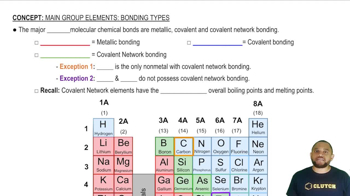Textbook Question
Give the geometry and approximate bond angles around the
central atom in CCl3-. (LO 8.1)
(a) Trigonal planar, 120°
(b) Trigonal pyramidal, 109.5°
(c) Trigonal pyramidal, 120°
(d) Bent, 109.5°
1295
views
 McMurry 8th Edition
McMurry 8th Edition Ch.8 - Covalent Compounds: Bonding Theories and Molecular Structure
Ch.8 - Covalent Compounds: Bonding Theories and Molecular Structure Problem 5
Problem 5






